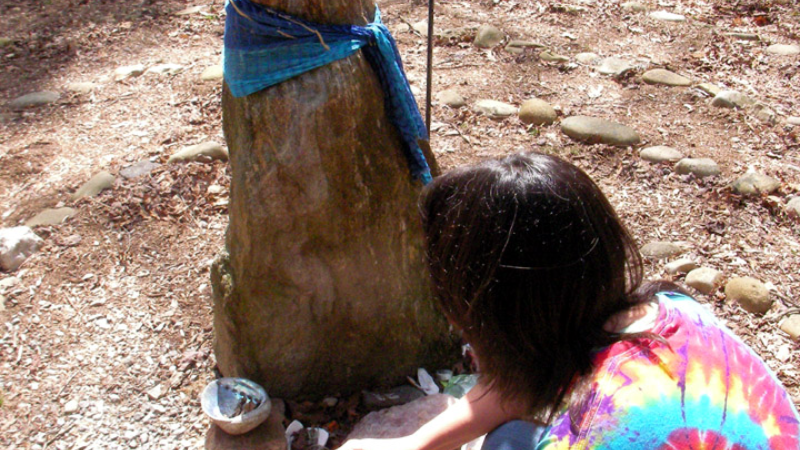About Sacred Space
Since one of the core elements of mindfulness is the ability to focus on the present moment, sacred spaces naturally facilitate mindful states. From a psychological perspective, setting aside a sacred space allows you to enter that space, step outside of time, and do your own work of contemplating the essence of being. If you have a special place set aside for this activity, and only for this activity, then entering it more readily puts you in a special state of mind.
Psychologists call this situation-specific learning. If your sacred space becomes associated in your mind with relaxation, meditation, and contemplation, then after a while simply entering your sacred space will put you into a meditative state (Nadel, 2019).
If you are fortunate enough to have access to a natural place that calls to you, you may make it your own by placing symbols and signs there that mean something to you. My own sacred space is marked by statuary and wind chimes. The gentle music of the chimes lends itself well to contemplation. When I am at home with the windows open, sometimes the wind blows through the trees, stirring the chimes. When this happens, I am reminded of my sacred space and the peace found there. Even if I am busy working at the computer, the music of the chimes reminds me for a moment of the happy times I have spent in my sacred space in meditation.
If you don’t have access to an outdoor place to create your own sacred space, you can create one indoors. Set up a small table somewhere in a corner of your home. Cover it with things that help you to achieve a meditative state. You may use candles, incense, house plants, or pictures of nature scenes or loved ones. You can use anything that might help you to connect with your True Self.
If you’re out walking in the woods, you may come upon a place that attracts you. Stop there and meditate for a while. If this place is particularly meaningful for you, you may mark it for others by making a small pile of stones. This has been a tradition of mine for decades now, and when we do ecospirituality workshops, students often do this. Coming upon a small pile of stones left by another can be a powerful way to connect yourself to others who have walked the path. It also allows you the opportunity to be in a sacred space that others have enjoyed before you.
Whether your sacred space is indoors or outdoors, it can be a useful place for finding your center and connecting with your True Self.
CLICK HERE TO SUBSCRIBE TO THE MINDFUL ECOTHERAPY CENTER’S YOUTUBE CHANNEL
Sacred Space Meditation
Prior to performing this sacred space meditation, you must first have your own sacred space. If you don’t already have one, you’ll need to find your own sacred space for the purposes of this activity. This should be a place that is fairly easy to access for you. It should be as free of man-made artifice as possible. This means that it should not be a place with manicured lawns and trimmed hedges if at all possible. It should be a pristine place, undisturbed by modifications due to humankind.
Of course, this is the ideal, and you may not have such a space readily available to you. If not, that’s okay. Just try to get as close to a wild, untamed environment as you can. If that’s also not a possibility for you, then you can include as many natural elements as possible in this meditation by playing recorded sounds of nature or filling a room in your home with houseplants, or just visualizing an outdoor scene that fills you with a sense of peace and harmony.
For the purposes of this meditation, the fewer reminders you have of the modern human-built world, the more successful your meditation will be. Once you have found your sacred space, make sure that you will be undisturbed here for the duration of the exercise. When you are ready to begin, watch Sacred Space Meditation video. This exercise is part of the Ecospirituality Group Program by the Mindful Ecotherapy Center, LLC. Learn more at mindfulecotherapy.org.

